Opinion & Analysis
The Evolution of the Hogan Grip
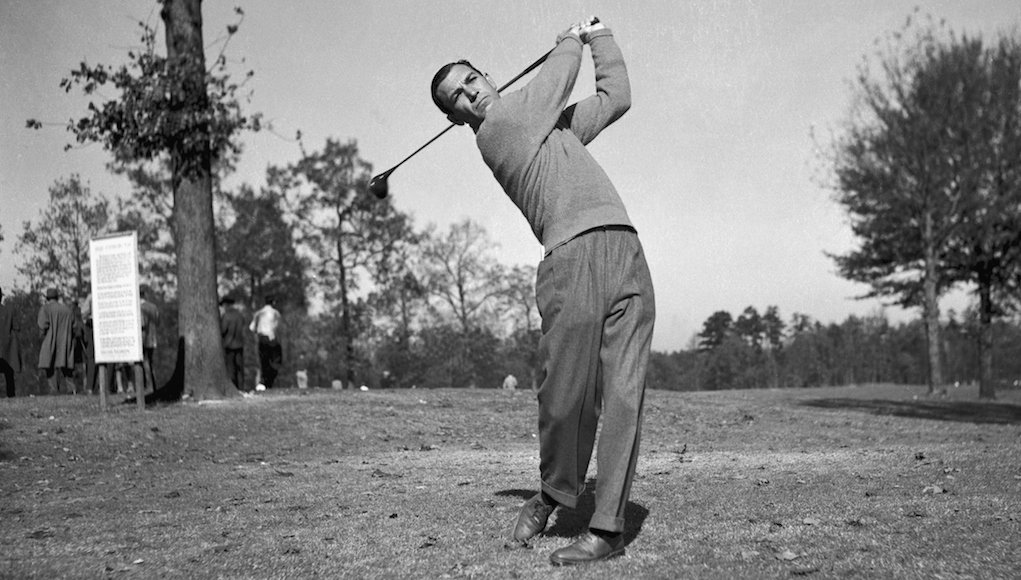
If you were to vote on who would truly be “the most interesting man in golf,” I believe Ben Hogan should win hands down. There may be a few better players in history (not many), but none had the career trajectory of Hogan, and certainly none cultivated the mystery that Hogan did regarding his technique.
Hogan’s ball striking skills were so superior (in 1940 he won three tournaments in two weeks, shooting 34-under par for 216 holes, missing just two greens in regulation) that his fellow competitors would stop their own practice to watch him on the range. When writing or speaking of the role of technique in his rise from struggling touring pro in most of the 1930’s to the game’s greatest practitioner of his time, Hogan regularly referred to the evolution of the way he gripped the club and how that affected his swing as possibly the single most important factor. His accounts, however, are often contradictory and confusing. As some have suggested, this may have been on purpose, as Hogan was loath to offer information for free that he had worked so tirelessly for on his own.
There are quite a number of sources of information regarding Hogan’s life and career, including three full-length biographies (Hogan: The Man Who Played for Glory by Gene Gregston, 1978, Hogan by Curt Sampson, 1997, and Ben Hogan, an American Life by James Dodson, 2004), two full-length books published by Hogan himself (Power Golf and Ben Hogan’s Five Lessons: The Modern Fundamentals of Golf), and various interviews and articles including “This is My Secret” from Life Magazine in 1955, and one-on-one interviews with Nick Seitz of Golf Digest in 1985, with George Peper of Golf Magazine in 1987, and a television interview with Ken Venturi. In each of these sources, the subject of Hogan’s grip arises, and the information given about how he arrived at his beliefs as to the details of assuming a proper grip and how he changed his grip over time are sometimes conflicting, and certainly confusing at best. For the purposes of this review, we will start with Hogan’s own words and writings.
One thing we need to do right away is to dispel the myth that Hogan was actually left-handed. In a 1987 Golf Magazine article, editor George Peper interviewed Hogan and asked this question: “You were a natural left-hander who took up the game right-handed, weren’t you?” To which Hogan responded: “No, that’s one of those things that’s always been written, but it’s an absolute myth. The truth is, the first golf club I owned was an old left-handed, wooden-shafted, rib-faced mashie that a fellow gave me, and that’s the club I was weaned on. During the mornings, we caddies would bang the ball up and down the practice field until the members arrived and it was time to go to work. So, I did all that formative practice left-handed, but I’m a natural right-hander.”
This should quiet all the people who insist Hogan was a lefty who played righty and that was a big advantage (which is not true at all, but that’s another story), and affected the way he held the club. Of course, those who claim Hogan was a natural lefty do so for a good reason. Here is what Hogan wrote in Ben Hogan’s Five Lessons: The Modern Fundamentals of Golf, which was published in 1957: “I was born left-handed — that was the normal way for me to do things. I was switched over to doing things right-handed when I was a boy, but I started golf as a left-hander because the first club I ever came into possession of, an old five-iron, was a left-handed stick”. If you ever wondered why Hogan is considered to be such a mystery, and why there is so much debate about what he did and why he did it, you can start right here.
Hogan first wrote about his grip in his first book, Power Golf, published in 1948. He had won 13 tournaments, including the PGA Championship (his first major), and was the leading money winner on the Tour. He was the dominant figure in the game, but in 1947 he slumped a bit and was outshined by Jimmy Demaret. He came back strong in 1948 with 11 wins and two majors, leading the money list and winning the Player of the Year award. The swings and posed photos in Power Golf are taken at Augusta National, most likely in 1947. The first chapter in Power Golf is titled, “Evolution of the Hogan Grip” (I stole that for this article) and starts by explaining that he started playing left-handed (see above), but he switched to righty because “the only clubs I could get were right-handed clubs.” As you can see, this is already getting confusing, as he never mentions whether he was right-handed or left-handed to begin with, but only that his first club was left-handed. You will see Hogan’s grip change in photos, but Hogan’s explanations as well as the opinions and observations of his biographers as to what the changes were and how they came about are often contradictory. Nevertheless, I will try to follow the information as best I can and make as much sense of this important topic in Hogan’s career as possible. Here is an excerpt from that first chapter:
“…let me say that I have tried all of the grips known to golfers at some time or another in my career. The grip I now use (in 1947) was arrived at by a series of trial-and-error experiments which began when I first took up the game. As recently as the fall of 1945, when I got out of the service, I made a radical change in my grip which I had been experimenting with whenever I got a chance to play golf while in the Army. I had been aware for some time that if I wanted to make a comeback as a successful golfer that I would have to make a change in my grip to correct a tendency I always had to over swing on the backswing. By the time I resumed tournament play, I had made the change and had everything in good working order. Formerly I used a grip in which I had what might be best described as a long thumb when speaking of the position of the thumb of the left hand on the shaft. During the course of the backswing that thumb used to slide down on the shaft, and as a result, I was always guilty of a certain looseness at the top of my swing which prevented me from getting the maximum of control. In correcting this, I pushed the left thumb back up on the shaft. The entire change couldn’t have amounted to more than half an inch in the movement of the thumb, but it was enough to restrict my backswing so that it no longer is loose.”
Hogan writes of his grip in more detail in Five Lessons: “When I changed over to the right side, possibly as a hangover from my left-handed start, I first used a cross-hand grip. I experimented next with the interlocking grip, and at length — I must have been about 15 at the time (around 1927) — I finally arrived at the overlapping grip. I was working then in the golf shop at the Glen Garden Club, and I copied the grip of Ted Longworth, the pro … Over the years since first adopting the overlapping grip, I have made two minor alterations. Right after I came out of the service, I changed from what is called the “long thumb” to a modified “short thumb.” I made my second alteration in 1946, moving my left hand a good half inch to the left. I was working then to find some way to of retaining my power while curbing my occasional tendency to hook. Moving my left hand over so that that thumb was directly down the middle of the shaft was the first step in licking that problem.” I find it quite interesting that Hogan left that bit of information out of “Power Golf,” and that he only revealed it after his semi-retirement in 1955 in the Life Magazine article “Hogan’s Secret” and the 1956 publication of “Five Lessons.” My guess is that he omitted it on purpose, not wanting to give away any competitive advantage.
Curt Sampson, in his biography of Hogan simply titled “Hogan,” provides some color to the story of Hogan’s beginnings as a caddy and his interaction with Longworth: “Long driving had been a macho thing in the Glen Garden caddie yard. Whatever caddies were still around at the end of the day would hit one ball each from the first tee: the shortest hitter had to run out onto the deserted course and pick up the balls, then they would do it again.” As Longworth recalled it for a story in the PGA Championship program in 1946, a few members always emerged from the 19th hole to watch. “Yah, Bennie, get ready to chase ‘em again,” the other boys would say, according to Longworth. (Byron) Nelson never lost; Hogan never won. Bennie tried hitting it cross-handed.”
“Bennie, if you don’t change that hog-killer’s grip, you might as well take up cattle rustling,” Longworth told Hogan. The tall, stoop shouldered pro bent down and untangled the boy’s hands. Since distance was the name of this game, he gave Bennie a distance grip, turning his left hand to the right and his right hand underneath the club, thus helping him close the clubface during the swing and producing a left-curving shot, a hook. Hooks roll.”
We can imagine what that grip looked like when we see the photo of what Hogan described as a “hook grip” in Power Golf. Looking at the photos of what Hogan thought was the ideal grip, and the one he used at the time, you can readily see how he weakened his grip as he explained.
This is obviously the grip that won Hogan the 1946 PGA Championship and nine tournaments between August of 1945 and April of 1946, but did Hogan make further changes after three-putting the 18th hole to lose the Masters in 1946? The history (no thanks to Hogan himself) is confusing, but let’s see if we can sort it out.
In the 1955 Life Magazine article “This is My Secret” (written after Hogan had essentially retired from competition and for which Hogan was paid $10,000), Hogan explains: “…in 1946, I was having trouble getting the ball in the air. I had a low, ducking, agonizing hook, the kind you can hang your coat on. I was finishing in the money and occasionally winning a tournament, even with a terrible game. But the handwriting was on the wall. If I was going to stay and make a living, something had to be done. I left the Tour and went home to Fort Worth about as desperate as a man can be. I sat and thought for three or four days. One night while laying awake in bed, I began thinking about a technique for hitting a golf ball that was so old it was almost new.” Hogan goes on to talk about the idea of “pronation,” whereby the clubface is rolled open by the hands right from the start of the backswing, and continues to open all the way to the top of the swing. “…before the night was over I had added two adjustments, which on paper made pronation hook-proof without any loss of distance.” Hogan then recounts how well the ideas worked in practice, and then in tournament play when he went to Chicago for the Tam O’ Shanter and won two events in a row. (An interesting side note: as it turns out, Hogan did not recollect this correctly. He finished 4th in the Tam O’ Shanter and it wasn’t until the Colonial later in the summer that he began to dominate the Tour). “The two adjustments had transformed pronation into a bonanza for me. They were so delicate that no one would ever think of looking for them, and I certainly was not going to tell anybody where to look. The first was in the grip. I moved my left hand one-eighth to one-quarter inch to the left so that the thumb was almost directly on top of the shaft. The second adjustment, which is the real meat of the “secret,” was nothing more than a twist or cocking of the left wrist. I cupped the wrist gradually backward and inward so that the wrist formed a slight V at the top of the swing…which had the effect of opening the face of the club to the widest practical extreme at the top of the swing.” Here is a picture from the article of Hogan demonstrating this change in the grip:
Compare this to his depiction of a “slice grip” in Power Golf, just 8 years earlier:
And here is Hogan demonstrating the grip in detail in his instructional masterpiece, “The Five Lessons: The Modern Fundamentals of Golf.”
Note that in the drawing the “V” formed by the left thumb and forefinger definitely points to the left of the chin, which would indicate a two-knuckle grip (Hogan says it should point to the right eye), while in the photo from the Life Magazine article above shows more of a one-knuckle grip where the “V” points more straight up. This makes a huge difference, and studying the pictures in the book it is unclear whether Hogan consistently used either. We can find a major difference between the Power Golf grip and the Five Lessons grip when we look at these two pictures of Hogan placing his left hand on the club:
At first glance, it would appear that Hogan is placing the club in his hand in a similar fashion, but take note of the angle of the shaft to the left forearm and the angle the fingers form in relation to the ground. The Power Golf version promotes more dorsiflexion (inward bending) of the wrist, while the Five Lessons grip is more palm oriented and would be what we would describe now as “weaker.” It is my opinion that Hogan played his best golf from 1946-1953 with his left hand closer to the Power Golf grip than the grip he demonstrates in Five Lessons and in the Life Magazine article. However, it is also evident to me that he steadily weakened his right hand, and that the obvious difference between the right-hand placement demonstrated in Power Golf and that of Five Lessons is more apparent in the videos of his swing after the accident. Let’s look at how he changed his ideas on right hand placement:
The key here in the eventual difference in the right-hand grip can be found in the phrasing. In Power Golf, Hogan says: “The club lies diagonally across the fingers of my right hand.” In Five Lessons, Hogan says: “The club lies across the top joint of the fingers of the right hand.” Here are examples of the finished right-hand grip:
With the club placed more horizontally across the fingers of the right hand at the bottom of the first joint with the palm facing the target, there is already much more of the hand to fold over the club, thus positioning the “V” more straight up at the chin in a weaker position. By positioning the club more diagonally across the fingers Hogan sets the right hand more under the club in a stronger position.
Hogan speaks of his game prior to his epiphany of 1946 as though he was a terrible golfer with a pronounced hook that threatened to end his career at any time. The record shows, however, that he won four events and was the Tour’s leading money winner in 1940. He won five events in 1941, and won both the Vardon Trophy (lowest average scoring average) and led the money list, and in 1942 he won six events and was leading money winner before being called up for service in World War II. Upon his return from the war, he won 5 times after August in 1945, then four more times in 1946 before his first win utilizing his “secret.’ It is apparent, however, that what Hogan found that night lying in bed propelled him to even greater heights from his win at Colonial in 1946 to his accident in early 1949. During that span, he won 29 times, a number that includes three major championships. It is interesting that Cary Middlecoff “remembered a pre-accident Hogan who occasionally missed fairways and greens just like everybody else”, but that “it was in 1950 that he began showing the kind of precision golf that set him apart,” Middlecoff wrote in his book, The Golf Swing.
“In 1950, (Hogan) began to take on the miracle-man aura. Small crowds would gather around him and try to watch his every move anytime he started hitting practice balls.” Hogan himself would disagree with Middlecoff, but said in his interview with Ken Venturi that while he never hit the ball as well after the accident as he had before, he “played” better, noting that it was his belief that course management played a greater role in his success than anyone could imagine. That’s certainly truer when you can hit almost every shot right where you are aiming.
- LIKE333
- LEGIT38
- WOW29
- LOL7
- IDHT7
- FLOP2
- OB2
- SHANK14
Opinion & Analysis
Myrtle Beach, Explored: February in South Carolina
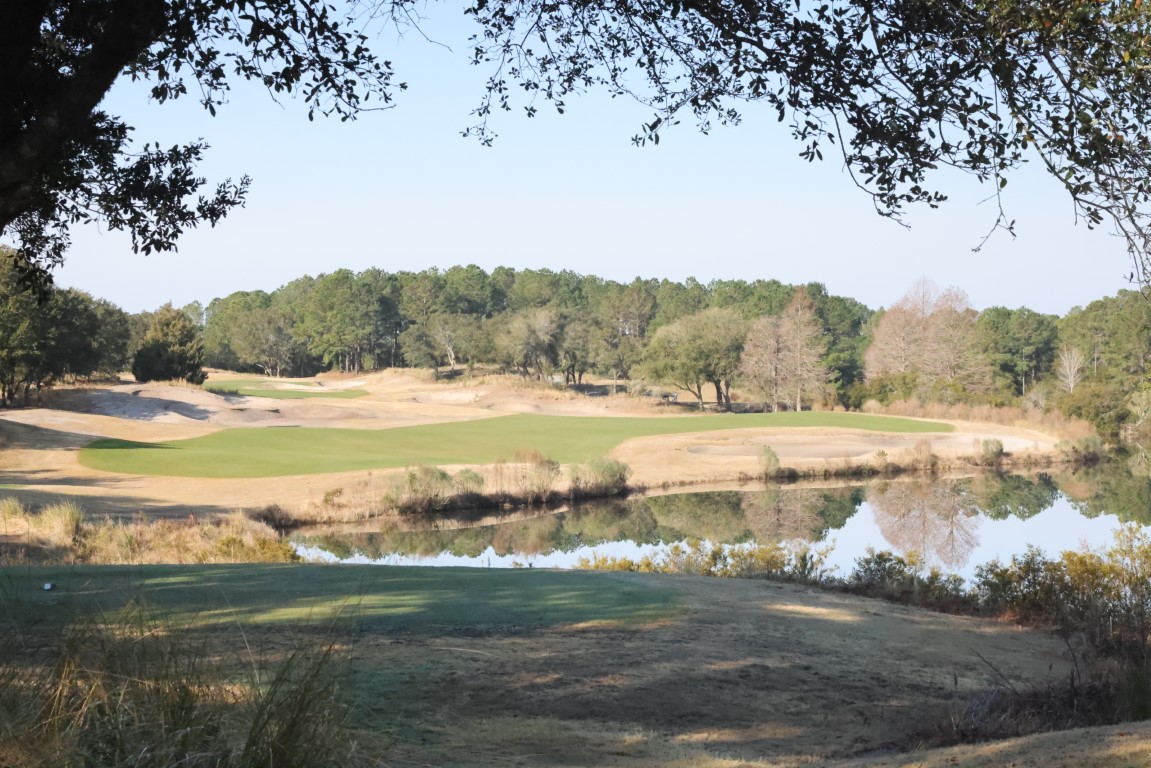
As I gain in experience and age, and familiarity breeds neither contempt nor disdain, I understand why people return to a place. A destination like Myrtle Beach offers a sizable supply and diversity of restaurants, entertainment venues, and shops that are predicated on the tenets of the service industry. Greet your customers with a smile and a kind word, and they will find comfort and assurance. Provide them with a memorable experience and they will suggest your place of business to others.
My first tour of Myrtle Beach took place in the mid-1980s, and consisted of one course: Gator Hole. I don’t remember much from that day, and since Gator Hole closed a decade later, I cannot revisit it to recollect what I’d lost. Since then, I’ve come to the Grand Strand a few times, and been fortunate to never place a course more than once. I’ve seen the Strantz courses to the south and dipped my toe in the North Carolina courses of Calabash. I’ve been to many in the middle, including Dunes, Pine Lakes, Grande Dunes among them.
2024 brought a quartet of new courses, including two at the Barefoot Resort. I’d heard about the North Myrtle Beach four-pack of courses that highlight the Barefoot property, including layouts from Pete Dye, Tom Fazio, Davis Love III, and Greg Norman. I had the opportunity to play and shoot the Dye and Fazio tracks, which means that I’ll have to return to see the other two. Sandwiched between them were the TPC-Myrtle Beach course, also from Tom Fazio, and the Pawley’s Plantation trace, by the hand of Jack Nicklaus. I anticipated a bit of the heroic, and bit of the strategic, and plenty of eye candy. None of those architects would ever be considered a minimalist, so there would be plenty of in-play and out-of-play bunkers and mounds to tantalize the senses.
My nephew arrived a few days early, to screen a few more courses. As a result, you the reader will have an extra quarter of mini-reviews, bringing the total of courses in this piece to eight. It was inconceivable that CJR would play four courses that I had never played nor photographed, but that was the case. His words appear at the end of this piece. We hope that you enjoy the tour.
Main Feature: Two Barefoots, a TPC, and Pawley’s Plantation
What Paul “Pete” Dye brought back from his trips to the United Kingdom, hearkened back to what C.B. MacDonal did, some 65 years prior. There is a way of finding bunkers and fairways, and even green sites, that does not require major industrial work. The Dye course at Barefoot Resorts takes you on a journey over the rumpled terrain of distant places. If there’s one element missing, it’s the creased and turbulent fairways, so often found in England and Ireland. The one tenet of playing a Dye course, is to always aim away from temptation, from where your eyes draw you. Find the safe side of the target, and you’ll probably find your ball. It then stands that you will have a shot for your next attempt. Cut the corner, and you might have need to reload. The Barefoot course begins gently, in terms of distance, but challenges with visual deception. After two brief 4s and a 3, the real work begins. The course is exposed enough, to allow the coastal winds to dance along the fairways. Be ready to keep the ball low and take an extra club or two.
If memory serves, TPCMB is my first trek around a TPC-branded course. It had all the trappings of a tour course, from the welcome, through the clubhouse, to the practice facilities and, of course, the course. TPC-Myrtle Beach is a Tom Fazio design, and if you never visit Augusta National, you’ll now have an idea of what it is like. You play Augusta’s 16th hole twice at TPCMB, and you enjoy it both times. Fazio really likes the pond-left, green-angle-around par three hole, and his two iterations of it are memorable.
You’ll also see those Augusta bunkers, the ones with the manicured edges that drop into a modestly-circular form. What distinguishes these sand pits is the manner in which they rise from the surrounding ground. They are unique in that they don’t resemble the geometric bunkering of a Seth Raynor, nor the organic pits found in origin courses. They are built, make no mistake, and recovery from them is manageable for all levels of bunker wizardry.
If you have the opportunity to play the two Tom Fazio courses back to back, you’ll notice a marked difference in styling. Let me digress for a moment, then circle back with an explanation. It was written that the NLE World Woods course designed by Fazio, Pine Barrens, was an homage to Pine Valley, the legendary, New Jersey club where Fazio is both a member and the architect on retainer. The Pine Barrens course was plowed under in 2022, so the homage no longer exists. At least, I didn’t think that it existed, until I played his Barefoot Resort course in North Myrtle Beach.
Pine Valley might be described as an aesthetic of scrub and sand. There are mighty, forced carries to travers, along with sempiternal, sandy lairs to avoid. Barefoot Fazio is quite similar. If you’re not faced with a forced carry, you’ll certainly contend with a fairway border or greenside necklace of sand. When you reach the 13th tee, you’ll face a drive into a fairway, and you might see a distant green, with a notable absence: flagstick. The 13th is the icing on the homage cake, a callout of the 8th hole at Pine Valley. Numero Ocho at the OG has two greens, side by side, and they change the manner in which the hole plays (so they say.) At Barefoot Fazio, the right-side green is a traditional approach, with an unimpeded run of fairway to putting surface. The left-side green (the one that I was fortunate to play) demands a pitch shot over a wasteland. It’s a fitting tribute for the rest of us to play.
Be certain to parrot the starter, Leon’s, advice, and play up a deck of tees. Barefoot Fazio offers five par-three holes, so the fours and fives play that much longer. Remember, too, that you are on vacation. Why not treat yourself to some birdie looks?
The Jack Nicklaus course at Pawley’s Plantation emerged from a period of hibernation in 2024. The greens were torn up and their original contours were restored. Work was overseen by Troy Vincent, a member of the Nicklaus Architecture team. In addition, the putting corridors were reseeded with a hardier, dwarf bermuda that has experienced great success, all along the Grand Strand that is Myrtle Beach.
My visit allowed me to see the inward half first, and I understand why the resort wishes to conclude your day on those holes. The front nine of Pawley’s Plantation works its way through familiar, low country trees and wetlands. The back nine begins in similar fashion, then makes its way east, toward the marsh that separates mainland from Pawley’s Island. Recalling the powerful sun of that Wednesday morning, any round beginning on the second nine would face collateral damage from the warming star. Much better to hit holes 11 to close when the sun is higher in the sky.
The marshland holes (12 through 17) are spectacular in their raw, unprotected nature. The winds off the Atlantic are unrelenting and unforgiving, and the twin, par-three holes will remain in your memory banks for time’s march. In typical Golden Bear fashion, a majority of his putting targets are smallish in nature, reflecting his appreciation for accurate approach shots. Be sure to find the forgiving side of each green, and err to that portion. You’ll be grateful.
Bonus Coverage: Myrtlewood, Beechwood, Arrowhead, and King’s North
Arrowhead (Raymond Floyd and Tom Jackson)
A course built in the middle of a community, water threatens on most every hole. The Cypress 9 provides a few holes forcing a carried drive then challenge you with water surrounding the green. On Waterway, a drivable 2nd hole will tempt most, so make sure the group ahead has cleared the green.
Myrtlewood (Edmund Alt and Arthur Hills) and Beechwood (Gene Hamm)
A middle of the winter New Englander’s paradise. Wide open fairways, zero blind shots and light rough allow for shaking off the rust and plenty of forgiveness. A plethora of dog legs cause one to be cautious with every tee shot. Won’t break the bank nor the scorecard.
King’s North @ Myrtle Beach National (Arnold Palmer)
- LIKE2
- LEGIT0
- WOW0
- LOL0
- IDHT0
- FLOP1
- OB0
- SHANK1
19th Hole
Vincenzi’s 2024 Players Championship betting preview: Pete Dye specialists ready to pass tough TPC Sawgrass test

The PGA Tour heads to TPC Sawgrass to play in one of the most prestigious and important events of the season: THE PLAYERS Championship. Often referred to as the fifth major, the importance of a PLAYERS victory to the legacy of a golfer can’t be overlooked.
TPC Sawgrass is a par-72 measuring 7,245 yards and featuring Bermudagrass greens. Golfers must be patient in attacking this Pete Dye course.
With trouble lurking at every turn, the strokes can add up quickly. With a par-5 16th that is a true risk-reward hole and the famous par-3 17th island green, the only safe bet at TPC Sawgrass is a bet on an exciting finish.
THE PLAYERS Championship field is often referred to as the strongest field of the year — and with good reason. There are 144 in the field, including 43 of the world’s top 50 players in the OWGR. Tiger Woods will not be playing in the event.
THE PLAYERS is an exceptionally volatile event that has never seen a back-to-back winner.
Past Winners at TPC Sawgrass
- 2023: Scottie Scheffler (-17)
- 2022: Cameron Smith (-13)
- 2021: Justin Thomas (-14)
- 2019: Rory McIlroy (-16)
- 2018: Webb Simpson (-18)
- 2017: Si-Woo Kim (-10)
- 2016: Jason Day (-15)
- 2015: Rickie Fowler (-12)In this article and going forward, I’ll be using the Rabbit Hole by Betsperts Golf data engine to develop my custom model. If you want to build your own model or check out all of the detailed stats, you can sign up using promo code: MATTVIN for 25% off any subscription package (yearly is best value).
5 Key Stats for TPC Sawgrass
Let’s take a look at five metrics key for TPC Sawgrass to determine which golfers boast top marks in each category over their last 24 rounds.
1. Strokes Gained: Approach
Strokes Gained: Approach has historically been far and away the most important and predictive stat at THE PLAYERS Championship. With water everywhere, golfers can’t afford to be wild with their iron shots. Not only is it essential to avoid the water, but it will also be as important to go after pins and make birdies because scores can get relatively low.
Total SG: Approach Over Past 24 Rounds
- Tom Hoge (+1.37)
- Scottie Scheffler (+1.20)
- Tony Finau (+0.99)
- Jake Knapp (+0.83)
- Shane Lowry (+0.80)
2. Total Driving
This statistic is perfect for TPC Sawgrass. Historically, driving distance hasn’t been a major factor, but since the date switch to March, it’s a bit more significant. During this time of year, the ball won’t carry quite as far, and the runout is also shorter.
Driving accuracy is also crucial due to all of the trouble golfers can get into off of the tee. Therefore, players who are gaining on the field with Total Driving will put themselves in an ideal spot this week.
Total Driving Over Past 24 Rounds
- Rory McIlroy (22)
- Akshay Bhatia (25)
- Keith Mitchell (25)
- Adam Hadwin (34)
- Sam Burns (+39)
3. Strokes Gained: Total at Pete Dye Designs
TPC Sawgrass may be Pete Dye’s most famous design, and for good reason. The course features Dye’s typical shaved runoff areas and tricky green complexes. Pete Dye specialists love TPC Sawgrass and should have a major advantage this week.
SG: Total (Pete Dye) per round over past 36 rounds:
- Patrick Cantlay (+2.02)
- Scottie Scheffler (+1.90)
- Min Woo Lee (+1.77)
- Sungjae Im (+1.72)
- Brian Harman (+1.62)
4. Strokes Gained: Ball Striking
Prototypical ball-strikers have dominated TPC Sawgrass. With past winners like Sergio Garcia, Henrik Stenson, Webb Simpson, Rory McIlroy and Justin Thomas, it’s evident that golfers must be striking it pure to contend at THE PLAYERS.
SG: Ball Striking Over Past 24 Rounds
- Scottie Scheffler (+2.02)
- Tony Finau (+1.51)
- Tom Hoge (+1.48)
- Keith Mitchell (+1.38)
- Will Zalatoris (+1.18)
5. Par 5 Average
Par-5 average is extremely important at TPC Sawgrass. With all four of the Par-5s under 575 yards, and three of them under 540 yards, a good amount of the scoring needs to come from these holes collectively.
Par 5 Average Over Past 24 Rounds
- Scottie Schefler (+4.31)
- Erik Van Rooyen (+4.35)
- Doug Ghim (+4.34)
- Wyndham Clark (+4.34)
- Matt Fitzpatrick (+4.31)
6. Strokes Gained: Florida
We’ve used this statistic over the past few weeks, and I’d like to incorporate some players who do well in Florida into this week’s model as well.
Strokes Gained: Florida over past 30 rounds:
- Scottie Schefler (+2.43)
- Erik Van Rooyen (+1.78)
- Doug Ghim (+1.78)
- Wyndham Clark (+1.73)
- Matt Fitzpatrick (+1.69)
7. Strokes Gained: Total on Courses with High Water Danger
With water everywhere at TPC Sawgrass, the blow-up potential is high. It can’t hurt to factor in some players who’ve avoided the “eject” button most often in the past.
Strokes Gained: Total on Courses with High Water Danger over past 30 rounds:
- Scottie Schefler (+2.08)
- Rory McIlroy (+1.82)
- Tony Finau (+1.62)
- Patrick Cantlay (+1.51)
- Will Zalatoris (+1.49)
THE PLAYERS Championship Model Rankings
Below, I’ve compiled overall model rankings using a combination of the five key statistical categories previously discussed — SG: Approach (25%), Total Driving (20%), SG: Total Pete Dye (14%), SG: Ball-striking (15%) SG: Par 5 (8%), SG: Florida (10%) and SG: High Water (8%).
- Scottie Scheffler
- Shane Lowry
- Tony Finau
- Corey Conners
- Keith Mitchell
- Justin Thomas
- Will Zalatoris
- Xander Schauffele
- Cameron Young
- Doug Ghim
- Sam Burns
- Chris Kirk
- Collin Morikawa
- Si Woo Kim
- Wyndham Clark
2024 THE PLAYERS Championship Picks
(All odds at the time of writing)
Patrick Cantlay +2500 (DraftKings):
Patrick Cantlay is winless since the 2022 BMW Championship but is undoubtedly one of the most talented players on the PGA Tour. Since the win at Wilmington Country Club, the 31-year-old has twelve top-10 finishes on Tour and is starting to round into form for the 2024 season.
Cantlay has done well in the most recent “signature” events this season, finishing 4th at Riviera for the Genesis Invitational and 12th at Bay Hill for the Arnold Palmer Invitational. The former Tour Championship winner resides in Jupiter, Florida and has played some good golf in the state, including finishing in a tie for 4th at the 2023 Arnold Palmer Invitational. His history at TPC Sawgrass has been up and down, but his best career start at The PLAYERS came last year when he finished in a tie for 19th.
Cantlay absolutely loves Pete Dye designed courses and ranks 1st in the field in Strokes Gained: Total on Dye tracks in his past 36 rounds. In recent years, he’s been excellent at both the RBC Heritage and the Travelers Championship. TPC Sawgrass is a place where players will have to be dialed in with their irons and distance off the tee won’t be quite as important. In his past 24, rounds, Cantlay ranks in the field in Strokes Gained: Approach.
Despite being winless in recent years, I still believe Cantlay is capable of winning big tournaments. As one of the only United States players to bring their best game to Marco Simone for the Ryder Cup, I have conviction that the former top amateur in the world can deliver when stakes are high.
Will Zalatoris +3000 (FanDuel):
In order to win at TPC Sawgrass, players will need to be in total control of their golf ball. At the moment, Will Zalatoris is hitting it as well as almost anyone and finally has the putter cooperating with his new switch to the broomstick style.
Zalatoris is coming off back-to-back starts where he absolutely striped the ball. He finished 2nd at the Genesis Invitational and 4th at the Arnold Palmer Invitational where his statistics were eye opening. For the week at Bay Hill, Zal gained 5.0 strokes on approach and 5.44 strokes off the tee.
Throughout the early part of his career, Zalatoris has established himself by playing his best golf in the strongest fields with the most difficult conditions. A tough test will allow him to separate himself this week and breakthrough for a PLAYERS Championship victory.
Shane Lowry +4000 (DraftKings):
History has shown us that players need to be in good form to win the PLAYERS Championship and it’s hard to find anyone not named Scottie Scheffler who’s in better form that Shane Lowry at the moment. He finished T4 at the Cognizant Classic followed by a solo third place finish at the Arnold Palmer Invitational.
The fact that the Irishman contended at Bay Hill is a great sign considering he’s really struggled there throughout his career. He will now head to a different style of course in Florida where he’s had a good deal of success. He finished 8th at TPC Sawgrass in 2021 and 13th in 2022.
Lowry ranks 6th in the field in approach in his past 24 rounds, 7th in Strokes Gained: Total at Pete Dye designed courses in his last 30 rounds, 8th in par 5 scoring this season, and 4th in Strokes Gained: Total in Florida over his past 36 rounds.
Lowry is a player who’s capable of winning big events. He’s a major champion and won another premier event at Wentworth as well as a WGC at Firestone. He’s also a form player, when he wins it’s typically when he’s contended in recent starts. He’s been terrific thus far in Florida and he should get into contention once again this week.
Brian Harman +8000 (DraftKings):
(Note: Since writing this Harman’s odds have plummeted to 50-1. I would not advise betting the 50).
Brian Harman showed us last season that if the course isn’t extremely long, he has the accuracy both off the tee and with his irons to compete with anyone in the world. Last week at Bay Hill and was third in the field in Strokes Gained: Approach, gaining 5.54 strokes on the field in the category.
In addition to the strong iron play, Harman also gained strokes off the tee in three of four rounds. He’s also had success at Pete Dye tracks recently. He finished 2nd at last year’s Travelers Championship and 7th at the RBC Heritage.
It would be a magnificent feat for Harman to win both the Open Championship and PLAYERS in a short time frame, but the reality is the PGA Tour isn’t quite as strong as it once was. Harman is a player who shows up for the biggest events and his odds seem way too long for his recent track record.
Tony Finau +6500 (FanDuel):
A few weeks ago, at the Genesis Invitational, I bet Hideki Matsuyama because I believed it to be a “bet the number” play at 80-1. I feel similarly about Finau this week. While he’s not having the season many people expected of him, he is playing better than these odds would indicate.
This season, Tony has a tied for 6th place finish at Torrey Pines, a tied for 19th at Riviera and tied for 13th at the Mexico Open. He’s also hitting the ball extremely well. In the field in his past 24 rounds, he ranks 3rd in Strokes Gained: Approach, 3rd in Strokes Gained: Ball Striking, 6th in Par 5 average and 15th in Total Driving.
Finau’s problem has been with the putter, which has been undeniably horrific. However, this week he will see a putting surface similar to the POA at TPC Scottsdale and PGA West, which he’s had a great deal of success on. It’s worth taking a stab at this price to see if he can have a mediocre week with the flat stick.
Sungjae Im +9000 (FanDuel):
It’s been a lackluster eighteen months for Sungjae, who once appeared to be a certain star. While his ceiling is absolutely still there, it’s been a while since we’ve seen Im play the type of golf expected of a player with his talent.
Despite the obvious concerns, the South Korean showed glimpses of a return to form last week at the Arnold Palmer Invitational. He tied for 18th place and gained strokes off the tee, on approach, around the green and with the putter. When at his best, Im is a perfect course fit for TPC Sawgrass. He has remarkable precision off the tee, can get dialed in with his irons on shorter courses and can get up and down with the best players on Tour.
This number has gotten to the point where I feel comfortable taking a shot on it.
Billy Horschel +20000 (FanDuel):
Billy Horschel is a great fit on paper for TPC Sawgrass. He can get dialed in with his irons and his lack of distance off the tee won’t be a major detriment at the course. “Bermuda Billy” does his best work putting on Bermudagrass greens and he appears to be rounding into form just in time to compete at The PLAYERS.
In his most recent start, Billy finished in a tie for 9th at the Cognizant Classic and hit the ball extremely well. The former Florida Gator gained 3.32 strokes on approach and 2.04 strokes off the tee. If Horschel brings that type of ball striking to TPC Sawgrass, he has the type of putter who can win a golf tournament.
Horschel has been great on Pete Dye designed courses, with four of his seven career PGA Tour wins coming on Dye tracks.
In a season that has seen multiple long shots win big events, the 37-year-old is worth a stab considering his knack for playing in Florida and winning big events.
- LIKE30
- LEGIT10
- WOW4
- LOL2
- IDHT0
- FLOP3
- OB1
- SHANK6
19th Hole
Vincenzi’s LIV Golf Hong Kong betting preview: Trio of major champs primed for big week
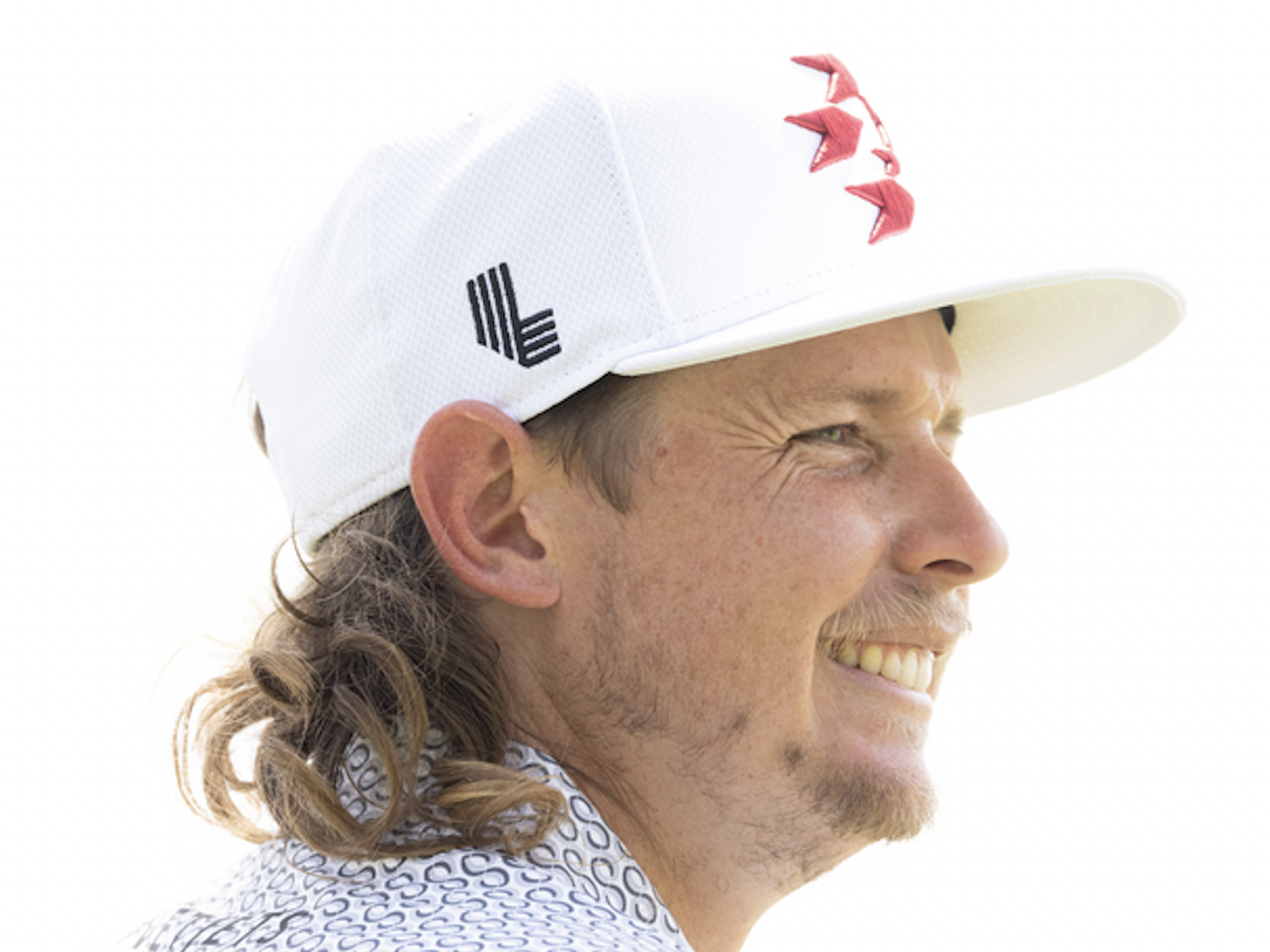
LIV Golf is set to begin its fourth event of the season at Hong Kong Golf Club in Hong Kong, China. This marks the first time that LIV Golf will travel to China for an event.
Hong Kong Golf Club is a par 70 measuring 6,710 yards. LIV will be using the “Fanling Course” for the event.
While speaking with Asian Tour player Travis Smyth, he gave me a rundown on what it takes to be successful at Hong Kong Golf Club.
“Hong Kong golf club, it’s pretty old school, like super short and tight. And I, I don’t think it falls into like a bomber’s hand. I think you’ll see a lot of guys hitting it to roughly the same spots on the majority of the holes. There’s a few holes where Bryson will be able to unleash a few but not many. When I played here, I hit Hybrid on Par 4’s off the tee maybe like seven times.”
Travis also said that the tight fairways and penal potential misses will keep the bombers at bay.
“It’s just that sort of course you’re hitting it like anywhere from 220 to 240 off the tee. And then from there you have a range of holes where it’s like kind of some sort of wedge or nine. It’s not very long.”
Around the green game will also be tremendously important at Hong Kong Golf Club.
“The greens are small as well and it’s usually quite hard to get up and down if you miss the greens. Someone like Cameron Smith I could see doing really well there. He played well in the international series. but just someone that’s, you know, pretty dolled in with their, their scoring clubs, he’s probably going to do well there.”
Players dialed in with their game from tee to green with control over the golf ball should fare extremely well.
“You can’t really scramble from the trees either. So, you really just have to. I’d, yeah, just whoever’s the best ball striker that week, you can’t really strap it around and fake it around there. You got to hit it straight. The tree lines are dead, there’s some hazards and stuff. It’s a short, tight quirky course, not what any of these guys are probably used to.”
Despite it being short, don’t be surprised if it gives players some real trouble.
“It should be fun viewing because there’ll be a lot of opportunities. They’ll feel like they can go low around there because it’s short but, you know, you make a few bogeys, and you get quite frustrated, and you start pushing off the tee and find some trouble and stuff. It can eat you up as well.”
Smyth finished 2nd at Hong Kong Golf Club to qualify for the 2023 Open Championship at Royal Liverpool.
Past Winners at Hong Kong Golf Club
- 2023: Ben Campbell (-19)
- 2022: Wade Ormsby (-17)
- 2018: Aaron Rai (-17)
- 2017: Wade Ormsby (-11)
- 2016: Sam Brazel (-13)
- 2015: Justin Rose (-19)
- 2014: Scott Hend (-13)
- 2013: Miguel Angel Jiminez (-12)
The top of the board once again will be a major threat this week. Jon Rahm is still in search of his first win on LIV and has been knocking at the door in each of his first three starts. Brooks Koepka hasn’t yet contended but is playing steady golf and has yet to shoot a round outside of the 60’s this season. Joaquin Niemann is the hottest player on the planet and has shown no signs of slowing down.
However, on a golf course that can neutralize the big hitters, this is an event that seems a bit more up for grabs than we’ve seen in the first three LIV events.
LIV Golf Stats YTD
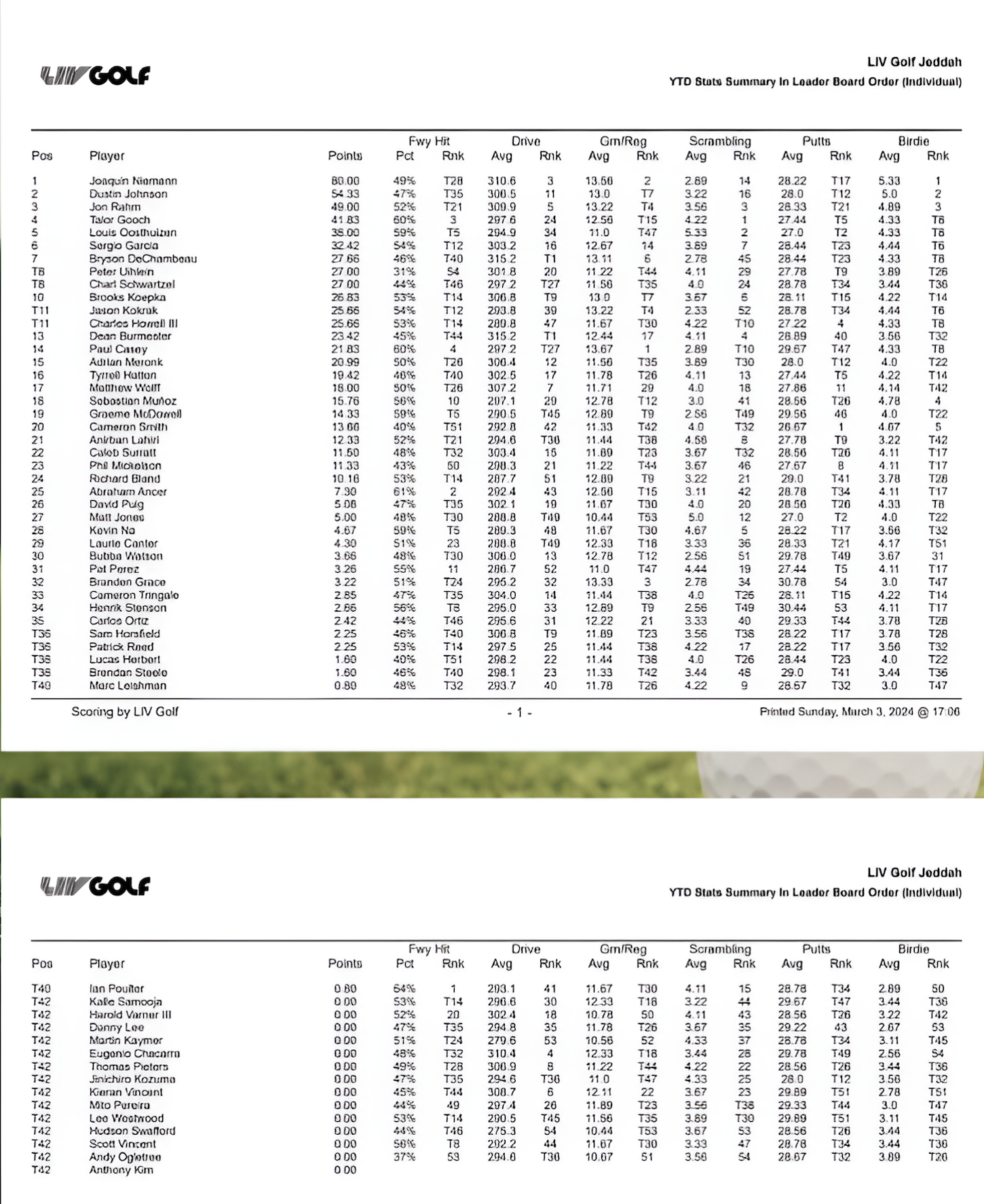
2024 LIV Hong Kong Picks
Cameron Smith +2000 (Bet365, BetRivers)
It’s been a slow start for Cam Smith this season. In his three starts on LIV, he’s finished T8, T15, T41 and has yet to look like the Cam that is one of the best players in the world. Hong Kong Golf Club should be the perfect course fit to get the former Open Champion out of his slump.
Hong Kong Golf Club is tight off the tee, and many players won’t be able to hit driver. That will neutralize some of the best drivers of the golf ball in the field and propel players like Cam, who are almost unbeatable from fairway to green. Cam’s driver has been a weakness throughout his career, and it’s been especially pronounced this season. He’s tied for 51st in fairways hit thus far on the season. Taking driver out of his hand this week could be exactly what he needs to get on track.
Despite the poor tee balls, Smith still ranks 1st in putting and 5th in birdies made. He’s also a great scrambler, and with small greens at the course, having to get up and down is inevitable. If he can play from the fairway this week, he should have a major advantage in the other facets of the game.
Louis Oosthuizen +2000 (DraftKings)
Louis Oosthuizen should be an absolutely perfect fit for Hong Kong Golf Club. The South African has been remarkably consistent over the past few months dating back to the fall, where he won two consecutive DP World Tour events and also finished 2nd at the International Series Oman. In his three LIV starts this year, Louis has finished T8 at LIV Mayakoba, 50th at LIV Las Vegas and T2 at LIV Jeddah.
Louis is relatively short off the tee and that won’t hurt him this week. He is one of the best putters and scrambler on LIV, and his silky-smooth swing looks as dialed in as ever at the moment. He’s yet to win a LIV event, but a victory for Louis seems imminent.
Patrick Reed +5000 (FanDuel)
Patrick Reed is another play who’s yet to win a LIV event but has been a winner throughout his entire career. The former Masters champion should love Hong Kong Golf Club as it will play to his strengths on and around the greens.
Reed played on the Asian Tour this fall and finished T15 at the Hong Kong Open and T7 at the Indonesian Masters. The experience in Asia this season should be a benefit for Reed acclimating to the travel and conditions this week.
The 34-year-old should benefit from taking driver out of his hand and similar to Smith, can beat anyone in the world if the tournament become a short game competition.
*Featured Image and Stats Image courtesy of LIV Golf*
- LIKE12
- LEGIT8
- WOW4
- LOL0
- IDHT0
- FLOP1
- OB1
- SHANK7
-
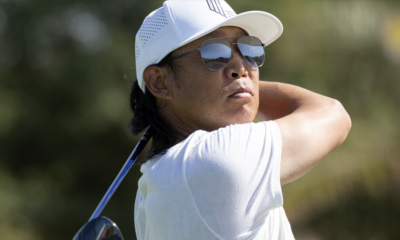
 19th Hole3 weeks ago
19th Hole3 weeks agoTour pro calls Anthony Kim a ‘f*****g idiot’ following Instagram comeback post
-
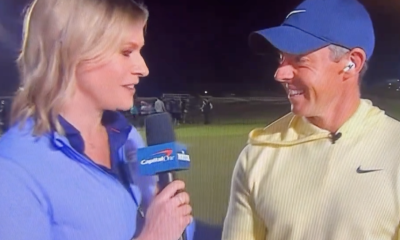
 19th Hole3 weeks ago
19th Hole3 weeks agoThis Rory McIlroy post-round ‘The Match’ moment is going viral…but all is likely not what it seems
-

 Whats in the Bag3 weeks ago
Whats in the Bag3 weeks agoAnthony Kim WITB 2024 (February)
-
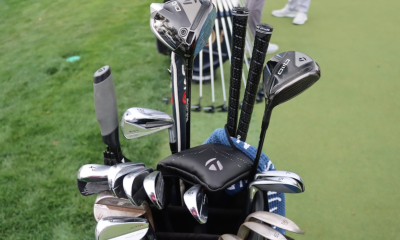
 Whats in the Bag2 weeks ago
Whats in the Bag2 weeks agoScottie Scheffler WITB 2024 (March)
-
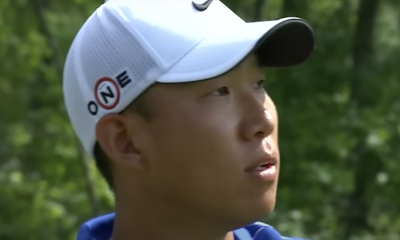
 19th Hole3 weeks ago
19th Hole3 weeks agoAnthony Kim’s speculated LIV Golf sign-on fee may surprise you
-
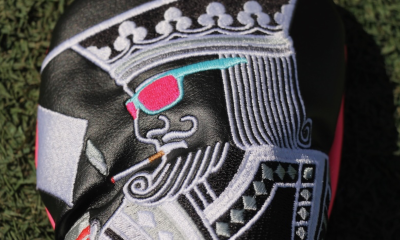
 Tour Photo Galleries2 weeks ago
Tour Photo Galleries2 weeks agoPhotos from the 2024 Arnold Palmer Invitational
-
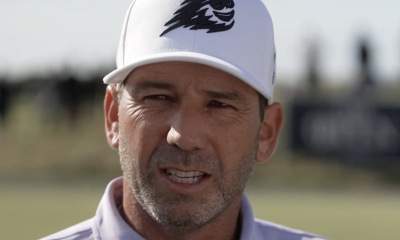
 19th Hole2 weeks ago
19th Hole2 weeks agoThe total sum that Sergio Garcia needs to pay in fines if he wants to return to DP World Tour revealed
-
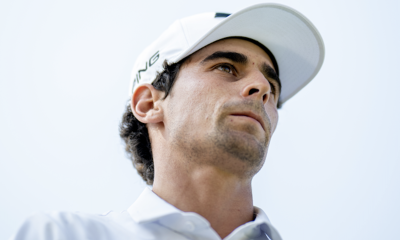
 19th Hole2 weeks ago
19th Hole2 weeks agoJoaquin Niemann names 3 PGA Tour events he’d love to play each year ‘in a perfect world’

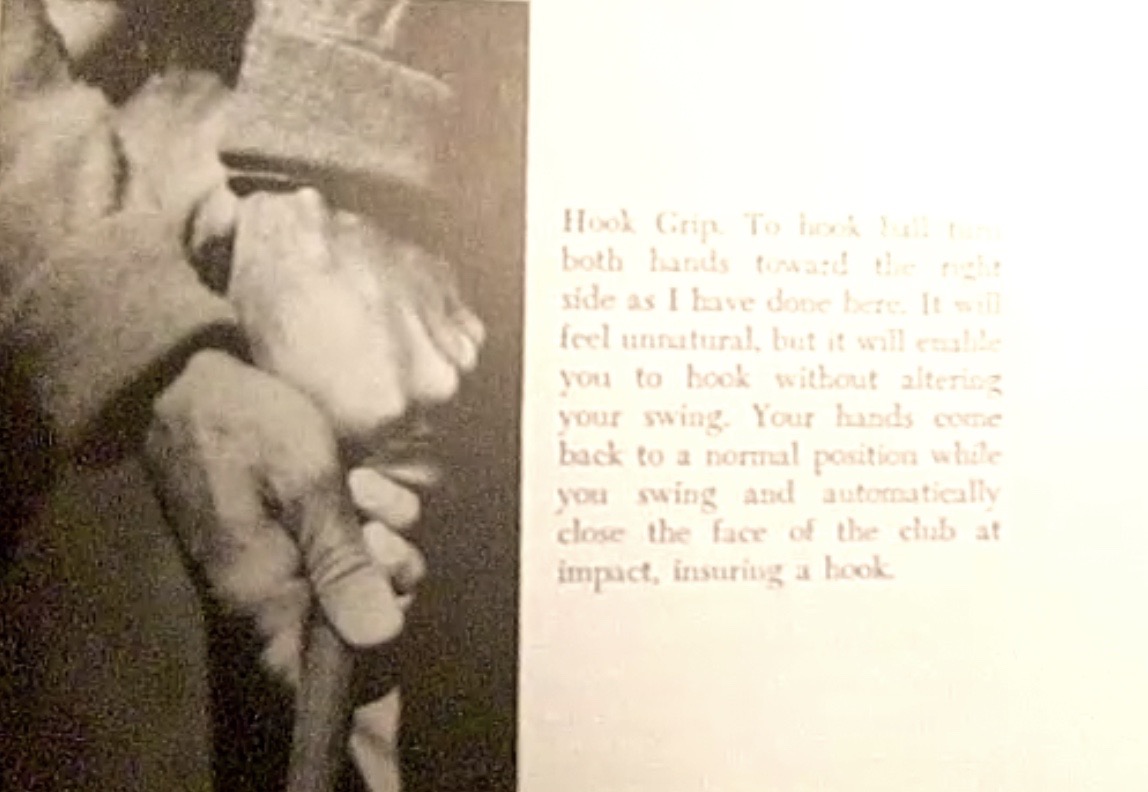
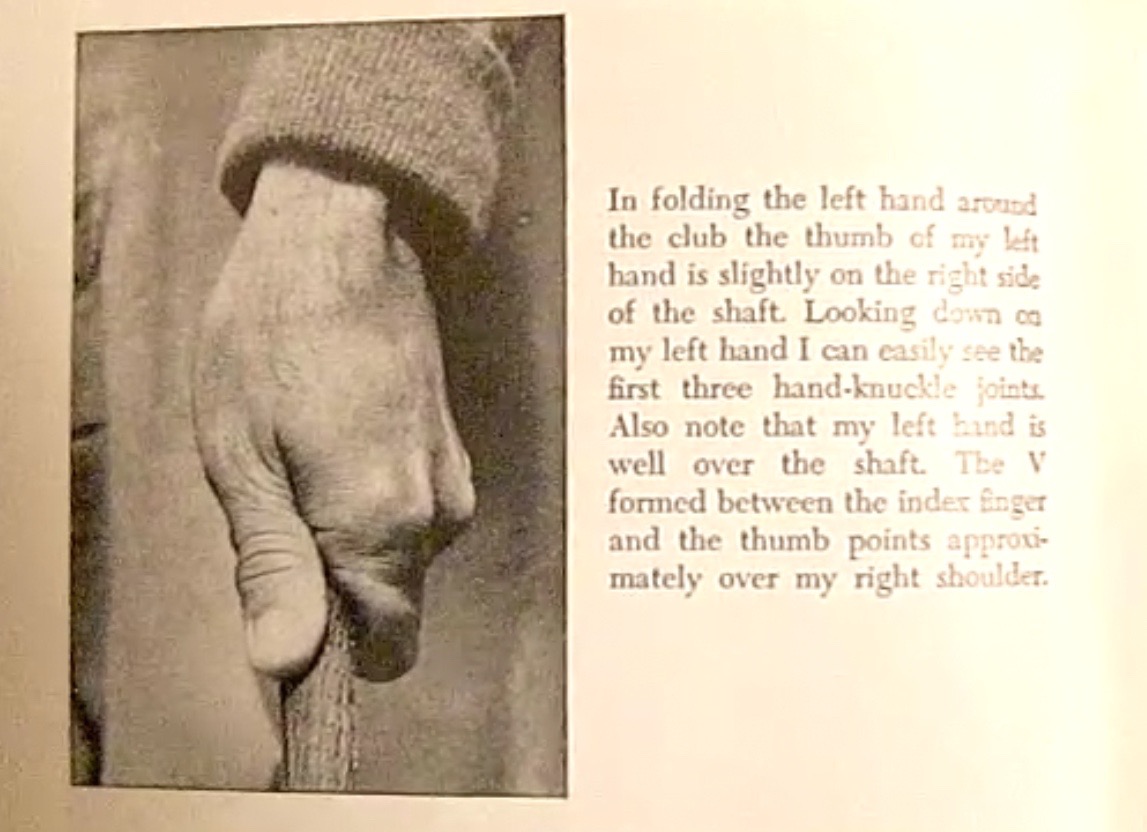
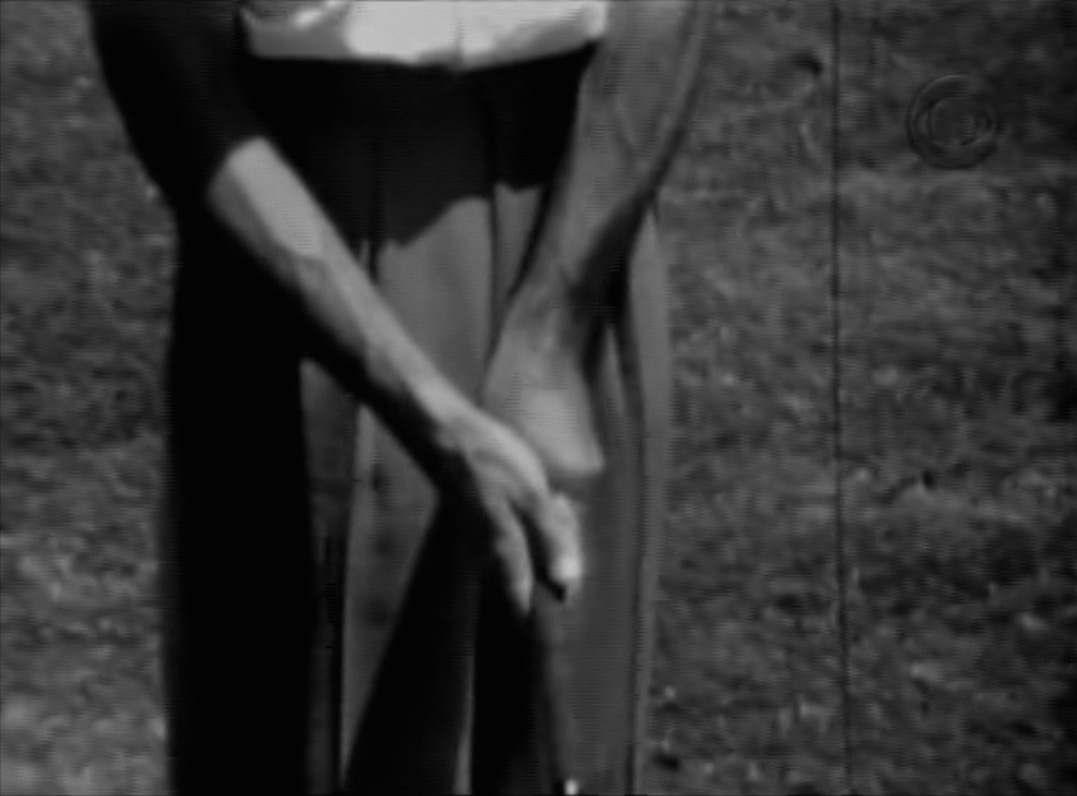
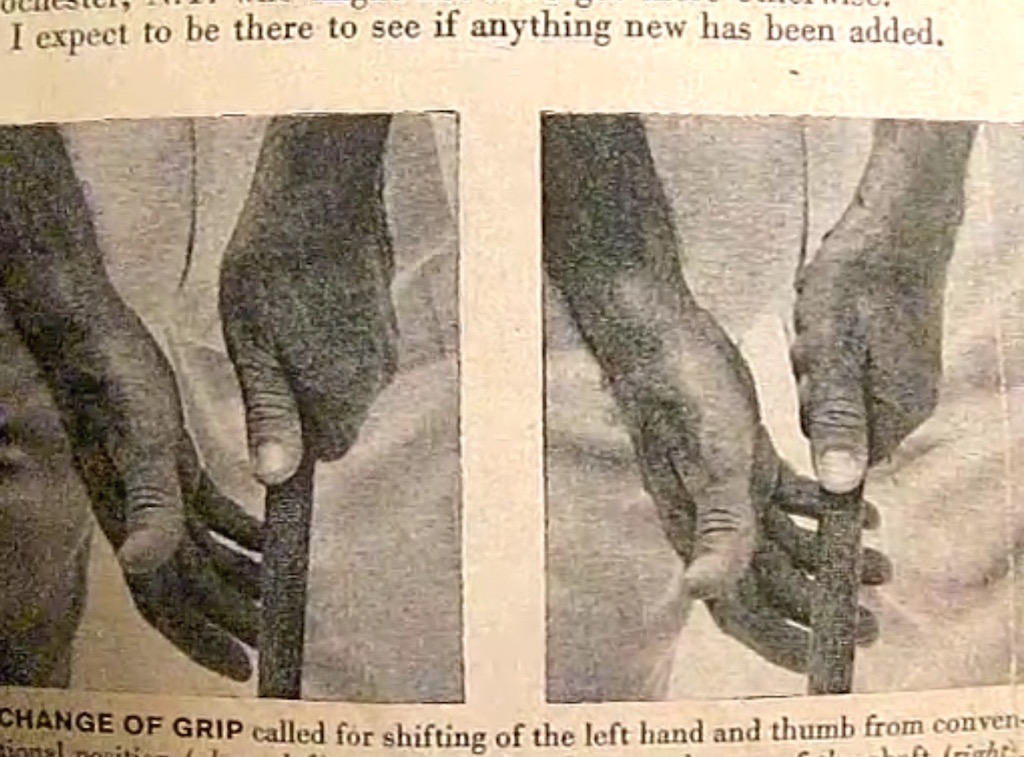


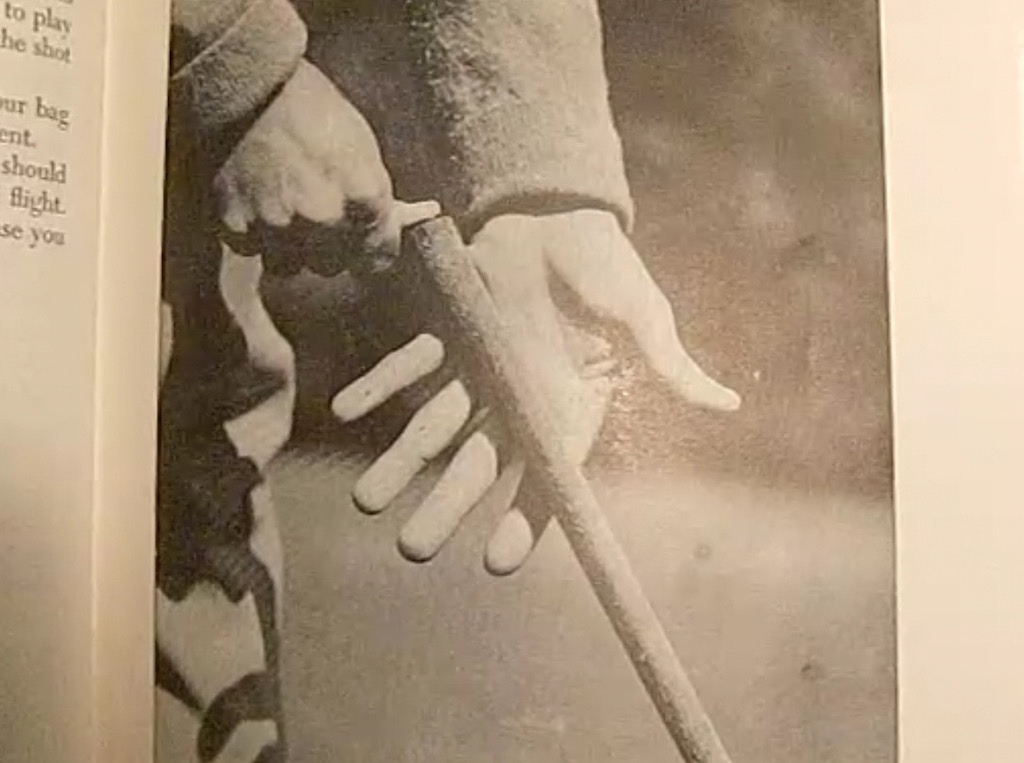
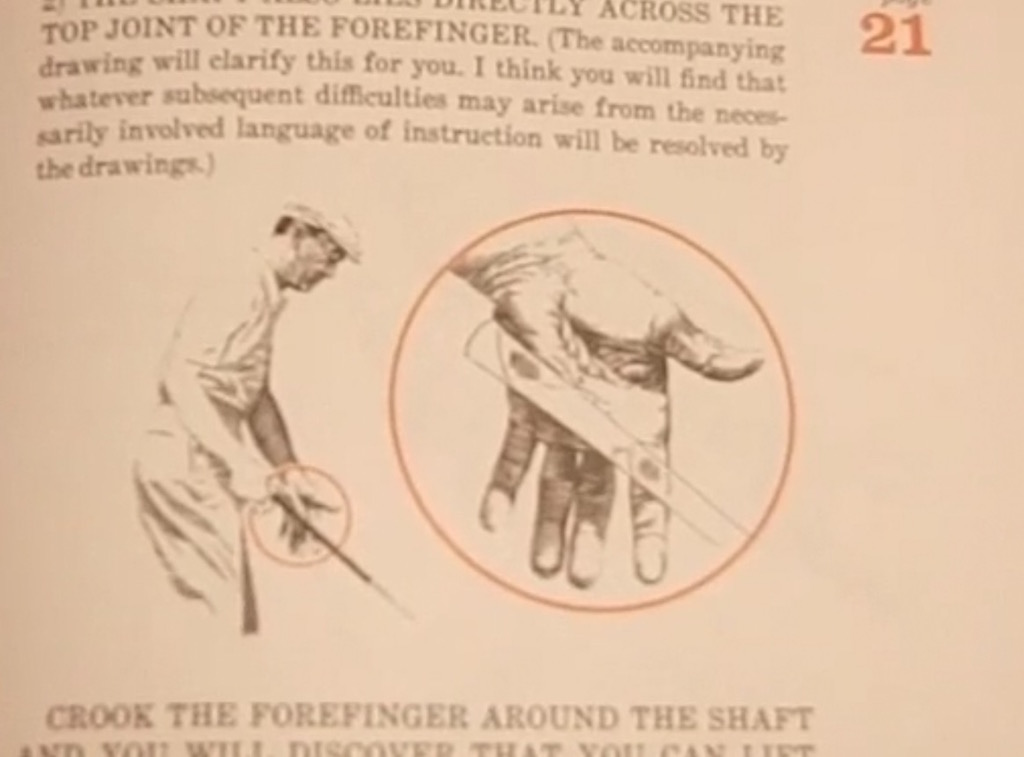
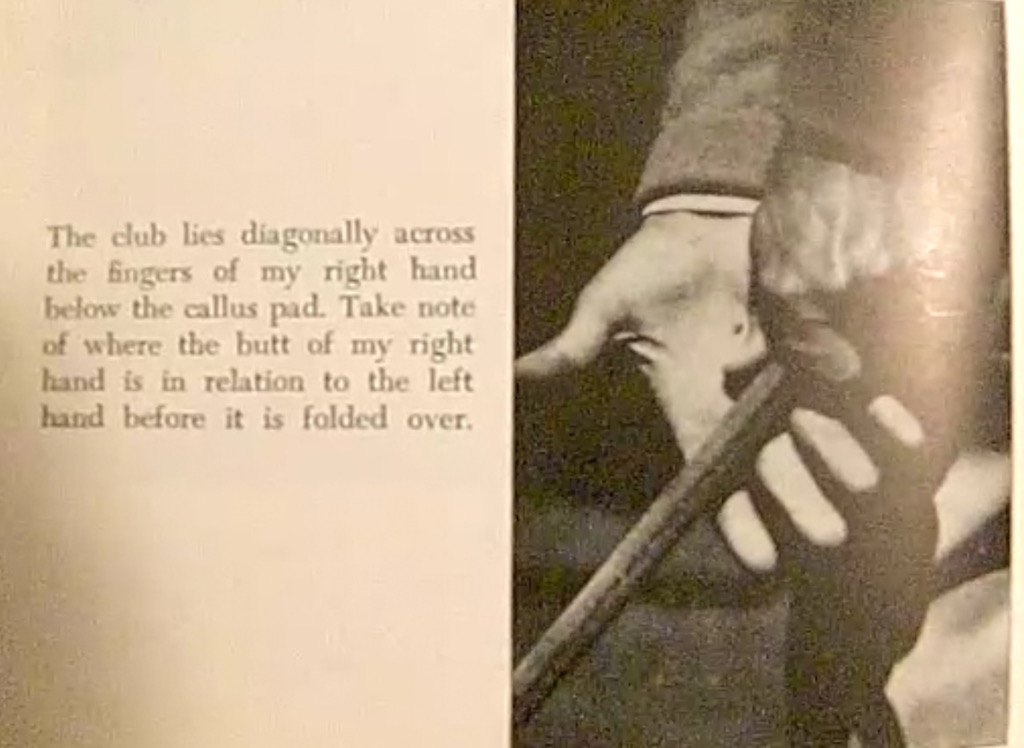

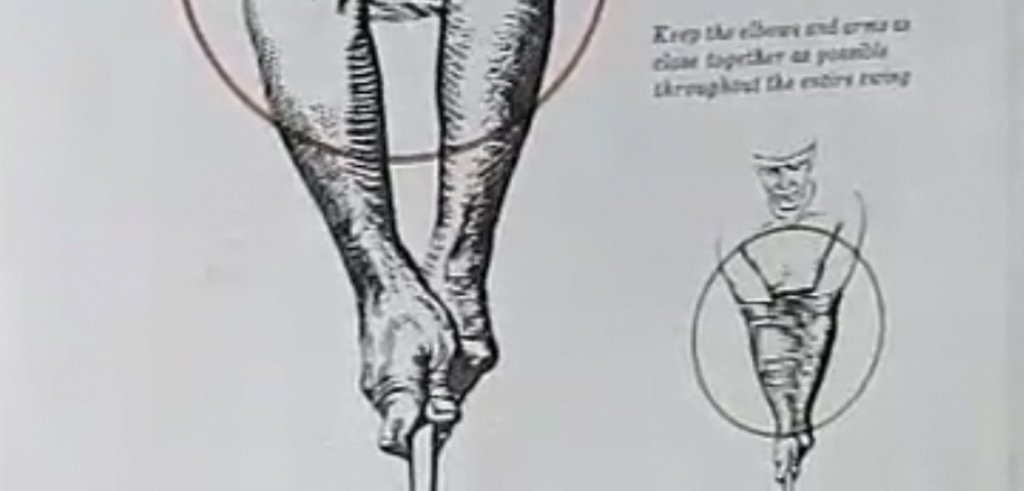
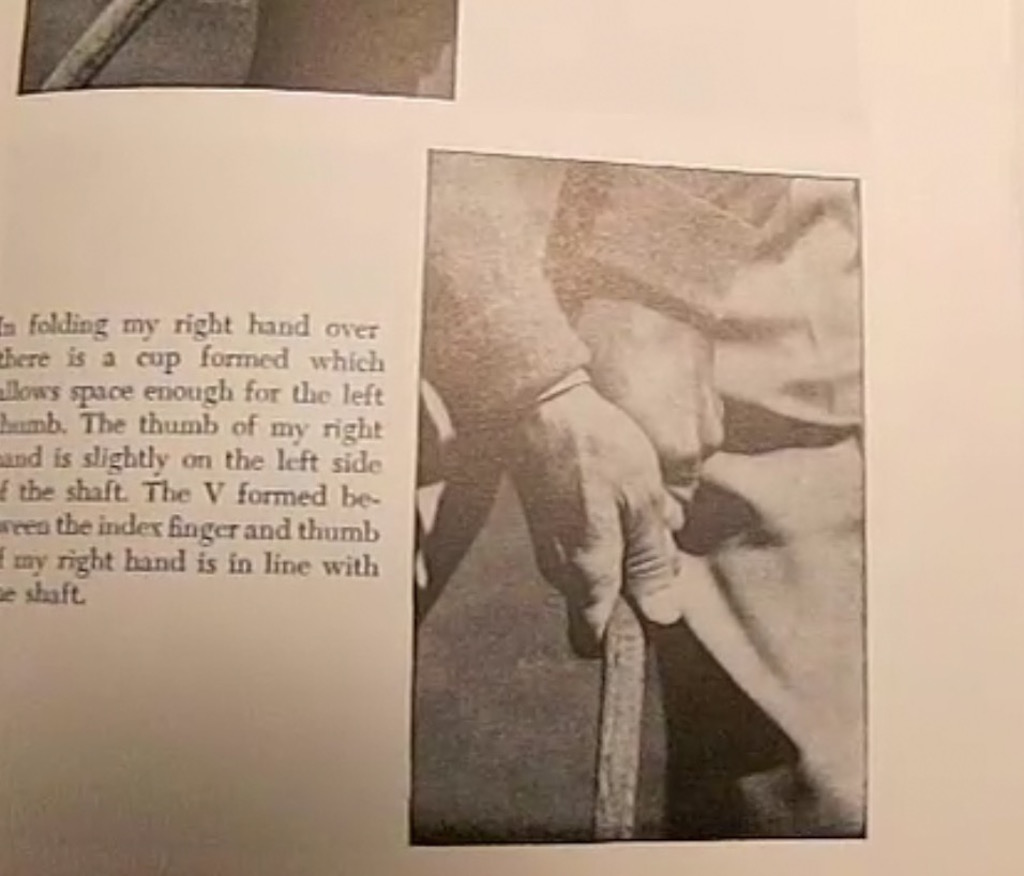





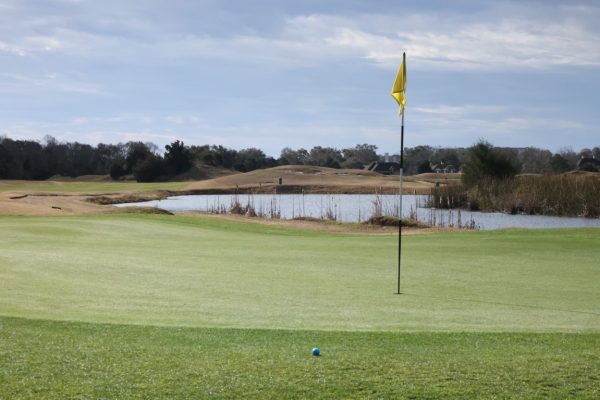


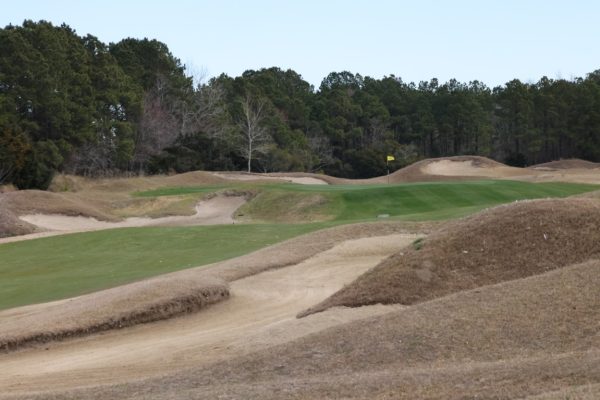
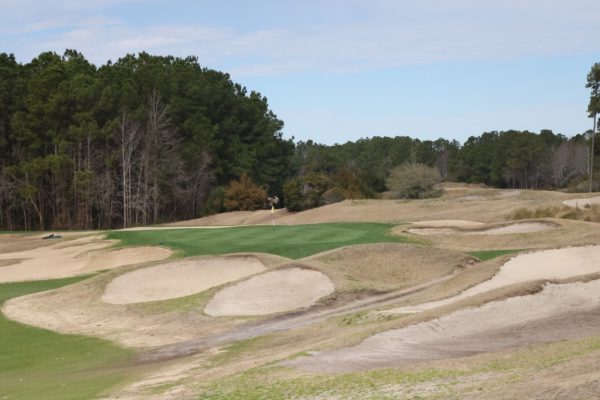
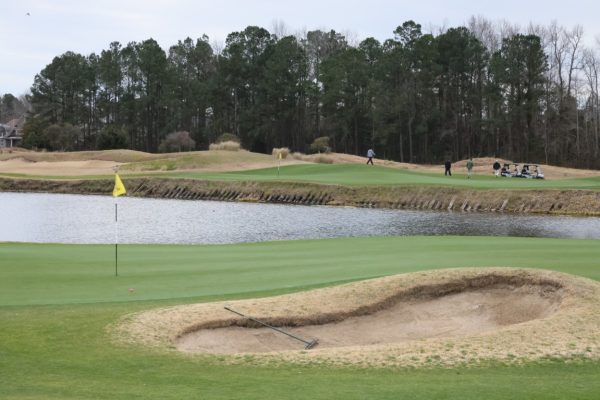

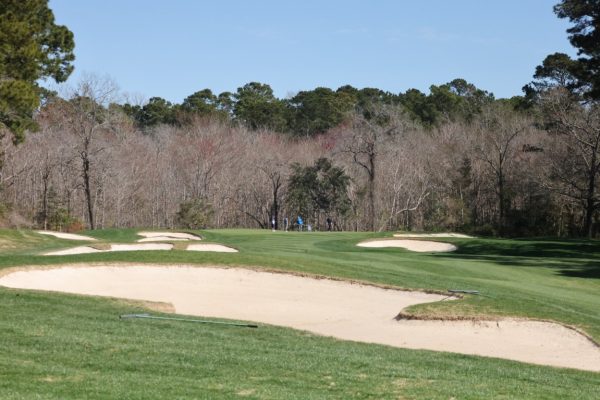



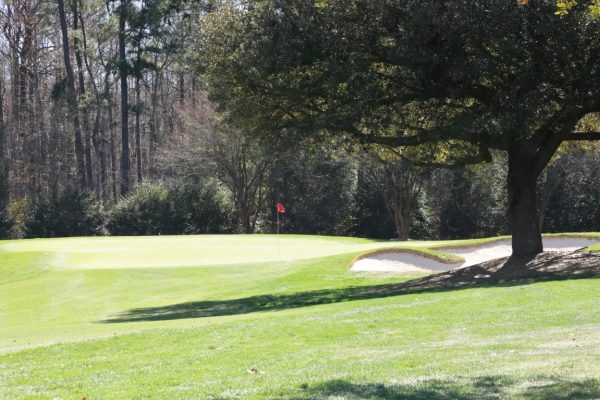

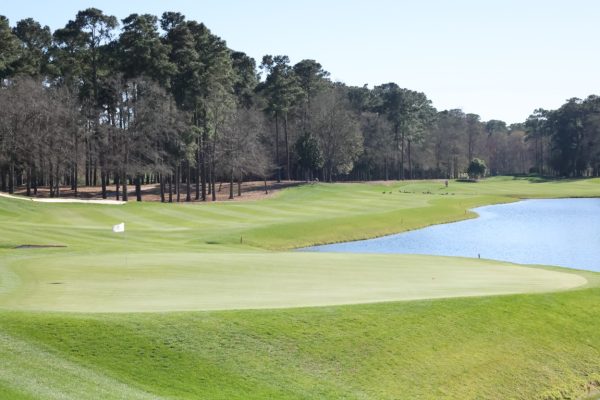
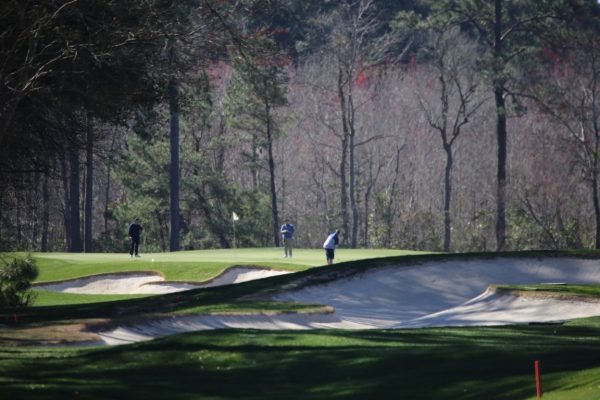
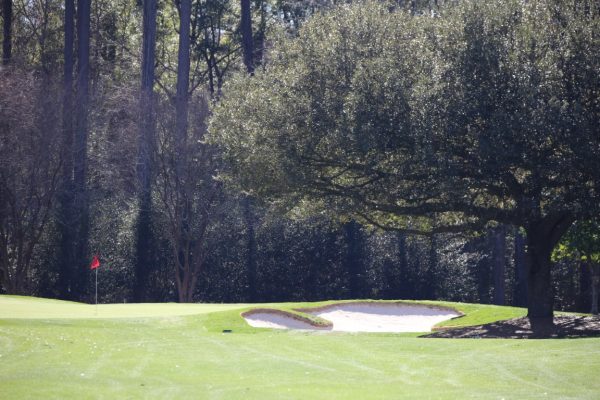


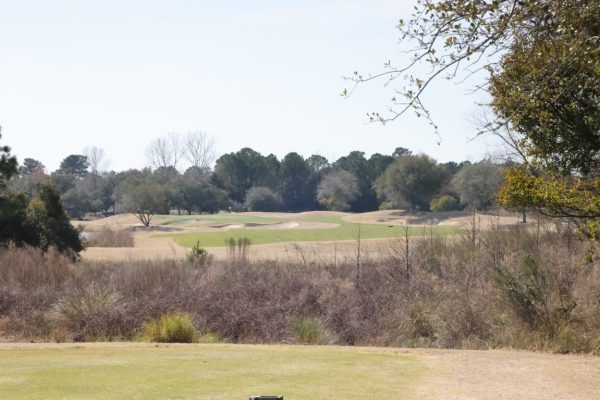







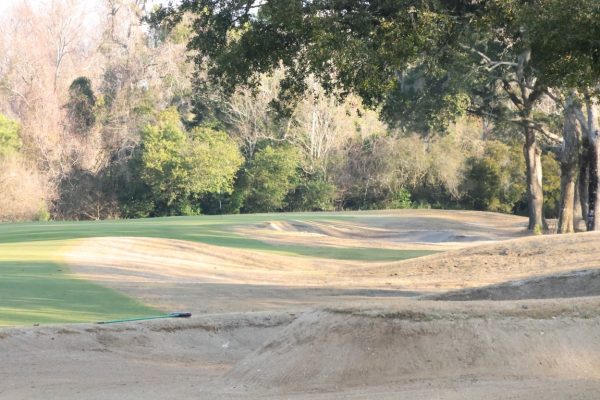
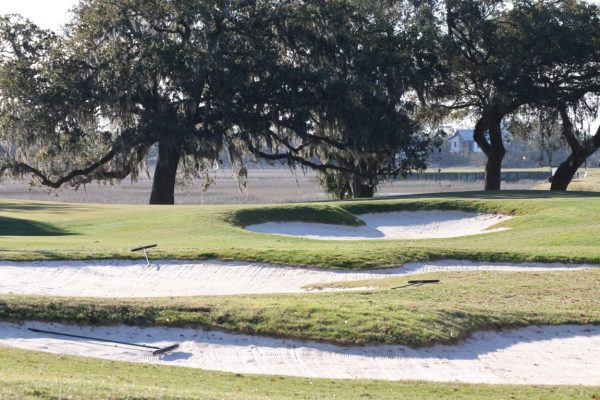
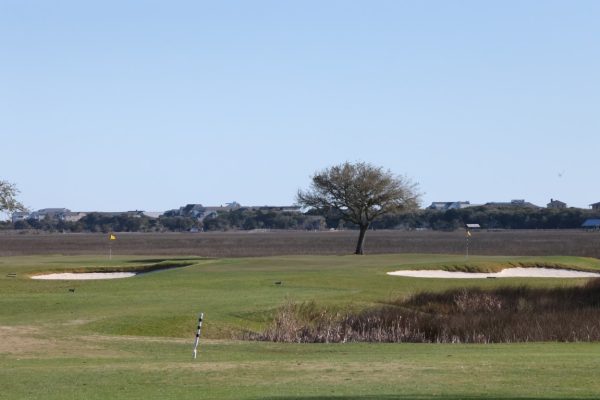
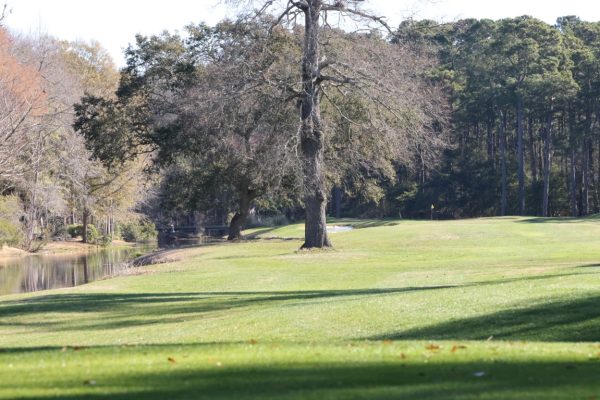

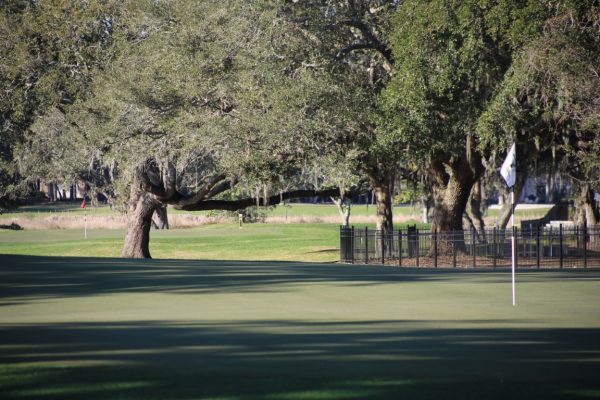
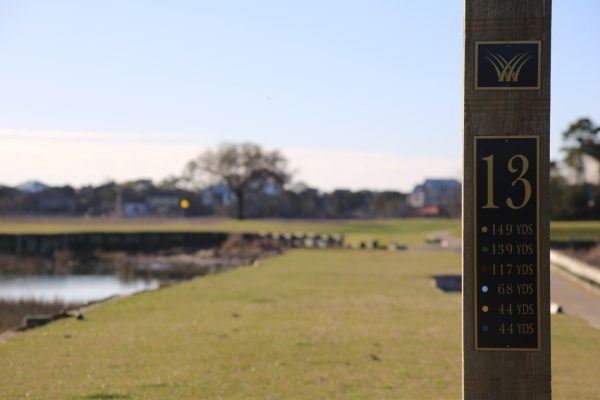
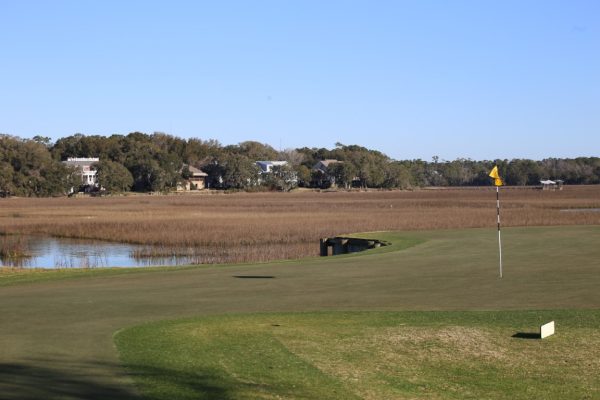
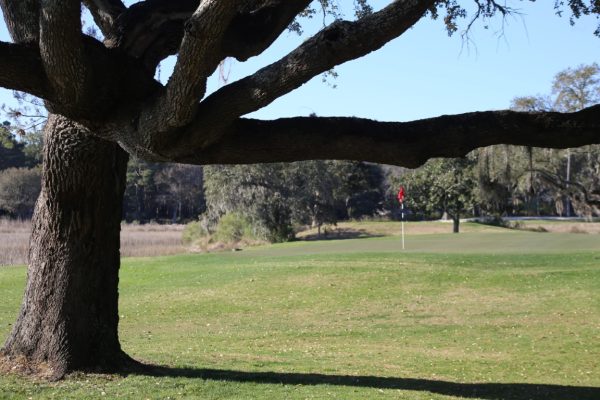

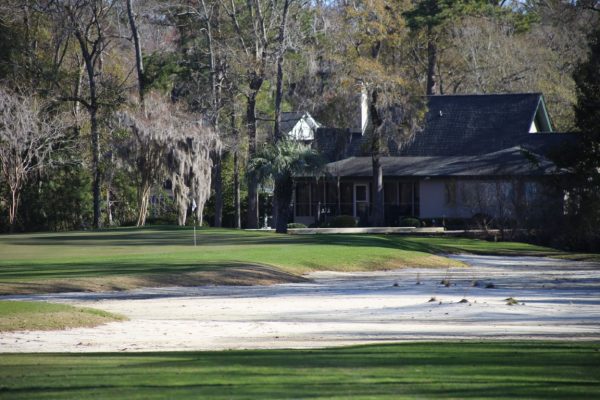






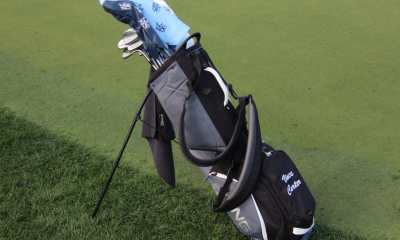

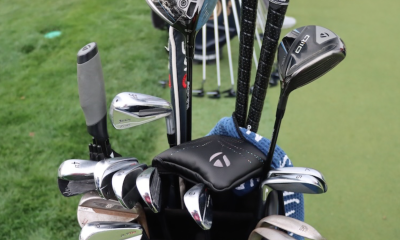

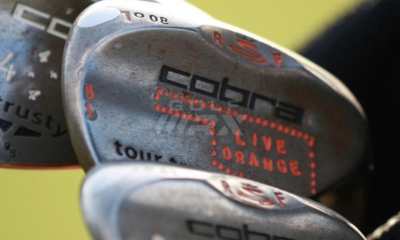

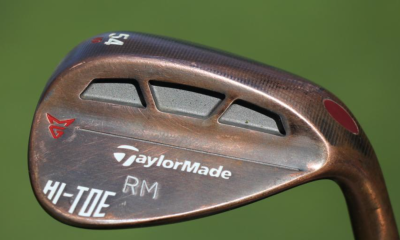

Big GG
Apr 2, 2021 at 1:57 pm
There is always no mention of the fact that Hogan did not write 5 lessons.
Art Gula
Aug 29, 2018 at 7:52 pm
Hi Wayne , I’ve been playing golf for 50 years and my beliefs and swing are comprised of nothing but Mr Hogan. From the stance, grip, rotation , body and finish. I maintain a 0 & 1 handicap in 3 leagues. Thanks
ART GULA
Dan Forant
Aug 6, 2017 at 6:25 am
Wow after playing 40 years shooting high 70’s/low 80’s, the long thumb deal has worked wonders for my game gaining control and distance since being in the 70’s age bracket. The short thumb actually shortened my clubhead arc length.
Steve Wozeniak
Aug 1, 2017 at 4:40 pm
Long article for an easy subject……his set up changed his grip. Once he learned how to set up correctly he started to feel the forces in the swing. As far as the long and “short” thumb, hello, put your left hand on the club and now push your thumb down and long……TENSION. He learned to just simply hold the club in the fingers like an athlete tension free. After setting up correctly he started to feel the inner and outer forces working, half a left arm and wishing he had three right hands when he wanted to hit it hard. He NEVER felt this before in his old set up and swing. And he DID NOT dig it out of the dirt he learned this from my Coach. Who also taught this to Claude Harmon, Jackie Burke, Jack Grout and many others that wanted to listen.
Steve Wozeniak PGA
Bob Pegram
Aug 1, 2017 at 2:55 pm
I recently read a reference to Ken Venturi’s comments on Hogan’s swing. He mentioned that Hogan was a “knuckle-dragger,.” In other words, he had extremely long arms in relation to his body size. Venturi said there are some recommended positions in The Five Fundamentals that are impossible for a person with shorter arms to get into.
Other item: I wonder if, after Hogan’s accident, he had pains that told him when he was swing the right way versus the wrong way. That would sure tell him immediately when his swing was wandering from the ideal swing he wanted.
Howard Clark
Jul 31, 2017 at 2:49 pm
Wouldn’t be nearly as interesting today, with the ProV1x which you can’t hook no matter how poor your swing or grip.
TeeBone
Jul 31, 2017 at 6:33 pm
Funny, I still see plenty of “banana” slices out there.
Lou
Jul 31, 2017 at 11:05 am
The one thing that Ben failed to adequately give up in his writings and interviews was the real “secret” to his stroke and that is he actually had a golf swing. When compared to another with a real swing, Bobby Jones, it is obvious to the practiced eye the left shoulder was the center of the swing and the hands did little other than guide the club face. The grip adjustments he made were necessary to move the direction from the left side of the fairway to the right, just as so often claimed. Wayne did a fine job of showing the evolution of Ben’s grip and that is all he claimed with the headline. Thanks Wayne! Ike
Wayne DeFrancesco
Jul 31, 2017 at 9:13 am
I would say that Hogan had two main problems he addressed over time. One was the length of his swing, especially with the driver, and the other was the tendency to hook the ball at inopportune times. His early swings with the longer clubs were extremely long, looking almost John Daly -like in the 30’s. I believe that he felt that the shortened left thumb helped him gain control of the top of his swing, although if you watch his swings through all his major wins his driver swing was consistently past parallel. In the drawings you reference in The Five Lessons Hogan’s actual swing resembles the “If his grip is faulty” picture much more than the “if his grip is correct” picture. Hogan’s actual driver swing never was short of parallel as depicted in the book. Part of the reason that he continued to swing the club past parallel has to do with his solution to his hooking problem, which was to roll the face open and cup his wrist from the start of the swing all the way to the top. This left forearm pronation combined with left wrist dorsiflexion creates additional wrist cock and procuces an increased angle between the left arm and the shaft. Hogan’s backswing had a “flinging” aspect to it where he started with a slight handle drag then “threw” the clubhead against his hands in mid-backswing before “catching” the clubhead and interrupting the backswing with the reversal of the right pelvic clockwise rotation to counter-clockwise. With the left wrist cupped and the face fanned open the change of direction produced a large amount of clubhead lag. Hogan was very strong but of slight build at less than 140 pounds and found that the speed he could create with this action kept him hitting the ball long enough to compete while gaining overall control. As Hogan got older and his trunk thickened he lost some of his trunk mobility and ability to move his pelvis, so when you look at swings from the Hogan vs. Snead match and the 1967 Masters you see a much shorter version but the same general characteristics.
Jeff Martin
Jul 30, 2017 at 12:17 pm
Game effort by Wayne, but, like many others, he has fallen prey to the timeline error contained in the August 8, 1955 Life magazine article that incorrectly placed the discovery of the “secret” in early 1946. That timing makes no sense given his playing record in 1945 and 1946, which was exemplary; his play throughout 1947, which was erratic; and the fact that Hogan didn’t win either, let alone both, of George May’s 1946 events, as he recalled he did after finding the “secret”, but did win the 1947 World Championship in September, after a break of a couple weeks (the other George May event was played earlier in the year). More importantly, contemporaneous accounts, for example, the January 10, 1949 Time Magazine cover story, which places the discovery in 1947, and published comments by Henry Cotton (who visited the US in the fall of 1947 for the Ryder Cup and spent time with Hogan discussing Ben’s plan to adopt a “power fade” that winter), make clear that the changes that comprised the “secret” were not implemented until the 1947-48 off-season. Video of swings from 1948 confirm this, revealing a weaker left hand grip than found in the “Power Golf” illustrations and companion film footage.
Dave Mason
Jul 30, 2017 at 9:59 am
Very interesting read. When I started playing I read Power Golf and Five Lessons and this is a great refresher, reminding me of the time I’d study the grip portions of those books.
D'oh
Jul 30, 2017 at 3:00 am
You obviously do not or have not understood the cupping of the left wrist part in regards to the top of the swing because you’re a dunce
Lloyd
Jul 30, 2017 at 5:16 pm
Wayne D should step in and respond to Obs good questions otherwise the dumb trolls win.
Wayne DeFrancesco
Jul 31, 2017 at 9:15 am
I did. See a couple of comments down.
Ude
Jul 30, 2017 at 8:01 pm
Forget about asking questions. This is a show-and-tell forum for sycophants and gearheads.
D'oh!
Jul 31, 2017 at 10:15 am
It’s a Secret. That’s the point. D’oh!
Sid Trench
Jul 30, 2017 at 2:51 am
Very informative article which reminded me of much that I had forgotten much. Thank you
The Hammer of Truth
Jul 29, 2017 at 4:17 pm
He wasn’t that good, he didn’t have to beat anyone
Nelson was better but left the game and Snead didn’t do much till later in his career.
All the real men were fighting wars.
Jeff Martin
Jul 30, 2017 at 11:41 am
During WWII, Hogan left the tour in August 1942 and did not rejoin full-time until August 1945. He beat everyone in 1940, 1941, 1942, 1946 and 1948, when he was leading money winner and had lowest stroke average each year. Nelson’s three big years were 1939, 1944 and 1945 (the latter two when all the real men were fighting wars); Snead’s big years were 1938, 1949, 1950 (1949 and 1950 being the year of Hogan’s accident and his first year back) and 1955.
Maslie
Jul 29, 2017 at 11:47 am
It would be even better if we can see bit deeper on Hogan clubs evolution, particularly his club length and lie too. Great read!
johnnied
Jul 31, 2017 at 12:58 pm
Watched an interesting video blurb on the golf channel about hogan’s clubs. it seems that he used a steel wire down the grip as a reminder for his weakend grip. The wire was about the size of a coat hanger which would produce a fairly sizable rib. The way it was positioned there was no way you could hook it. was that his “secret”?
Jeff Martin
Aug 1, 2017 at 8:06 am
I think it was at least part of his “secret” because, according to Byron Nelson, Hogan had a tendency to re-grip the club stronger during a round. The “reminder” rib would let him know if he was re-gripping. I have gripped a couple of Hogan’s drivers at the USGA museum that had the reminder, and the rib places the left hand into a weak, one-knuckle position.
Darrin
Aug 4, 2017 at 10:01 am
Hogan was 5’8″ tall and 140 lbs in his prime. Sure he was very strong for his size, kind of like a gymnast I suppose, but ‘big thick meaty hands?” Maybe relative to his size but compare to someone who is 6’0 190 lbs probably not.
But go ahead and keep spinning your narrative, it’s quite fun to witness how your brain works. And please, remember to take your meds.
Jeff Martin
Aug 5, 2017 at 9:55 am
The grips weren’t “thin”, felt like they were maybe built up a wrap or two. The grip rib was to help prevent him from unconsciously re-gripping it stronger. I’m sure he knew where to put them without the reminder…
Mums
Jul 29, 2017 at 11:43 am
Very well done. Thanks!
ROY
Jul 29, 2017 at 11:07 am
Great read!!!!
Tom F. Stickney II
Jul 29, 2017 at 8:32 am
Fantastic analysis Wayne…great read as well. Why you’re one of the best in our industry!
Wayne DeFrancesco
Aug 1, 2017 at 6:05 pm
Very nice of you to say that Tom. I appreciate it.